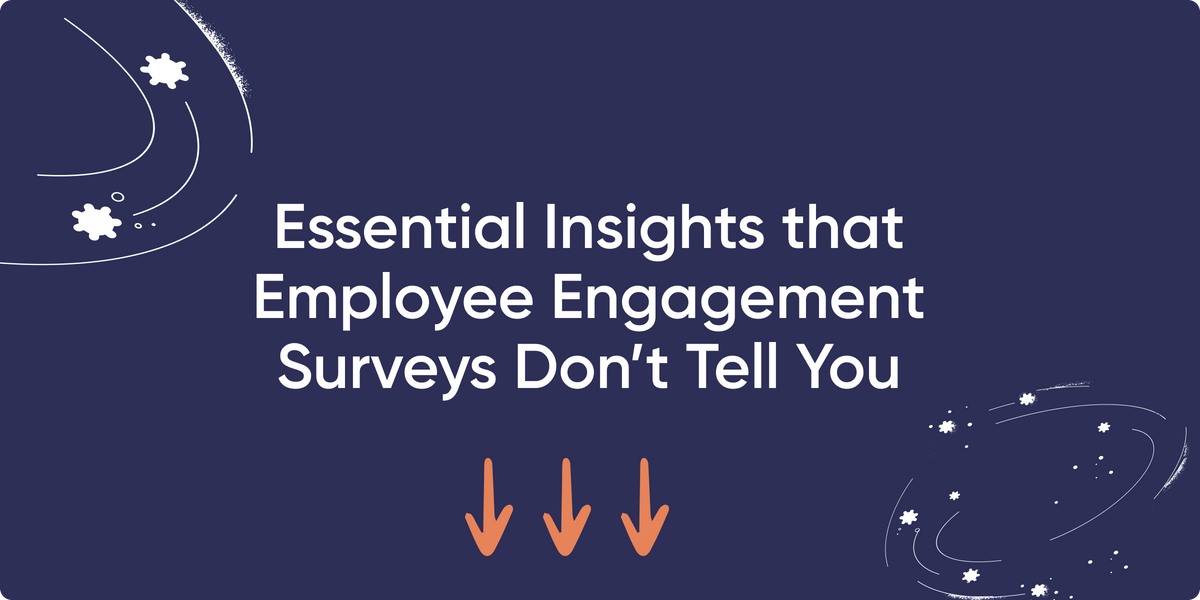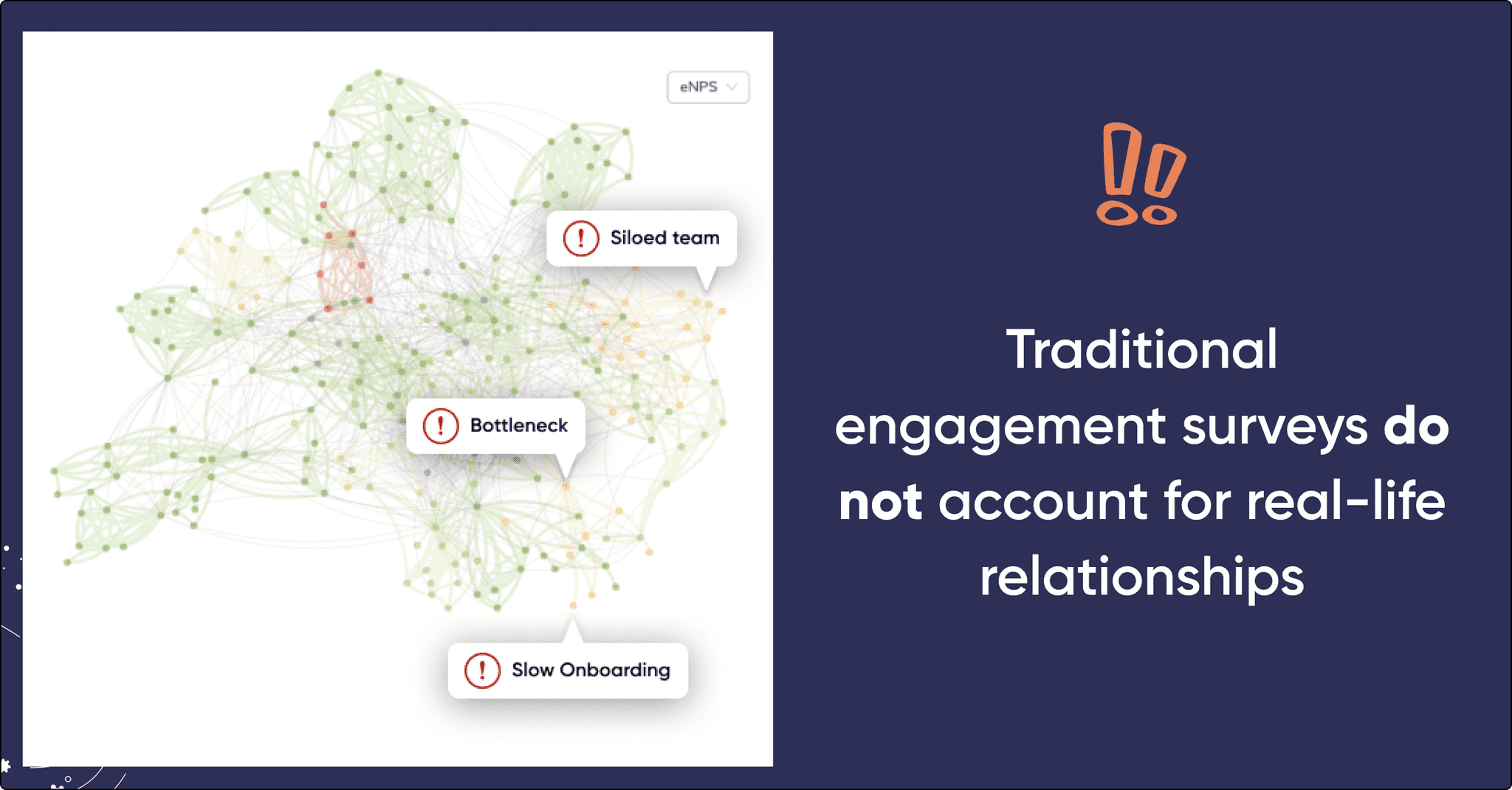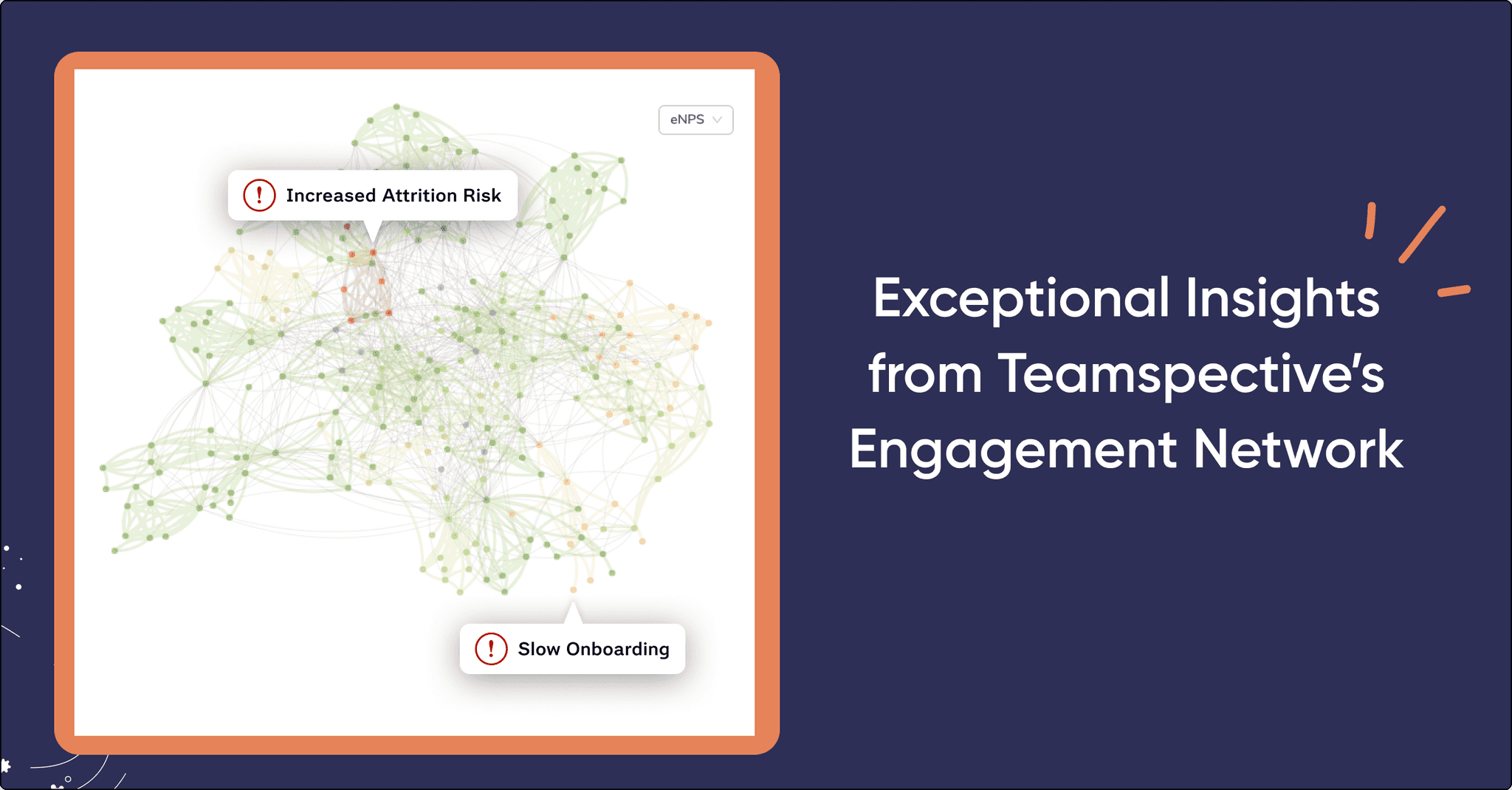In today's fast-paced work environment, understanding employee engagement is crucial. While we have more tools than ever to gather insights on how engaged our employees are, the problems arise when we have to make sense of the data.
This blog discusses blind spots of employee engagement surveys and explains why focusing on the web of relationships between employees is crucial in addition to the broader trends.
Typical Issues Traditional Engagement Surveys Have Difficulty Revealing
Relationships between employees play a pivotal role in shaping the work environment and, consequently, the results of engagement surveys. Understanding these interpersonal connections and team structures are essential for improving engagement and productivity, but they are sometimes hard to uncover and understand.
Here are a few common issues that arise within organizations.
The Lonely Newcomer
While onboarding surveys, traditional engagement surveys and performance evaluations are a good starting point for measuring new employee onboarding, they lack key information on how new employees build networks inside the company.
Engagement surveys or onboarding surveys do not highlight how new employees have been able to build relationships within their new colleagues. A new employee struggling to form bonds within the team can feel isolated, impacting their engagement and satisfaction levels. If you are able to identify networking issues with new employees, it can reflect a need for better integration practices and mentorship programs that foster a sense of belonging and support.
The Overwhelmed Bottleneck
It is often hard to know what is the reason for a low engagement score in a team where members actively collaborate cross-functionally with other departments. Organizations often have “unofficial teams” who collaborate, but it’s very common that nobody is keeping track of them. However, this is a very common source of excessive task lists for people working cross-team.
An employee inundated with requests from all directions may experience high stress and struggle to maintain quality and timeliness in their work. If you identify employees experiencing excess demand, you can address it by helping the person delegate better, implementing clearer communication channels or additional support structures within the team.
The Siloed Team
Teams that operate in isolation from the rest of the organization can experience conflicts or misunderstandings with other departments. This lack of cross-functional interaction diminishes the quality and efficiency of work, as the team misses out on diverse perspectives and support. Addressing it requires efforts to enhance cross-team collaboration and breaking down silos through joint projects or shared goals.
---
By focusing on these scenarios, organizations can start to address the underlying issues affecting engagement scores. It's not just about interpreting data but understanding the human stories behind the numbers. Enhancing the quality of relationships and ensuring effective team structures are in place can significantly influence the overall health and productivity of the workplace.
Elevating Employee Insights with Teamspective’s Engagement Network
Teamspective’s Engagement Network offers a radically new approach to deciphering engagement data and addressing problem areas within organizations. It shifts the focus from conventional data analysis to a more dynamic and interactive understanding of workplace engagement, rooted in the real interactions between employees.
- Seamless Integration with Communication Tools: By connecting with platforms such as Slack or Microsoft Teams, Teamspective’s tool automatically maps out the interactions between employees, creating a comprehensive organizational network. This network serves as the foundation for a deeper analysis of how employees communicate and collaborate.
- Visualizing Engagement through Network Graphs: The generated network graph can be overlaid with engagement survey data, allowing leaders and HR professionals to visually identify the drivers of engagement or pinpoint challenges affecting different parts of the organization. This visualization makes it easier to understand complex dynamics and how they influence overall engagement.
- Identifying Key Issues: With this tool, organizations can uncover specific problems such as increased burnout risk, challenges with onboarding new employees, or the existence of silos that hinder cross-functional teamwork. These insights are crucial for developing strategies to improve the work environment and employee satisfaction.
- Actionable Insights for Improvement: The detailed insights provided by the Engagement Network enable companies to address the unique needs of their workforce. Whether it’s redesigning onboarding processes to be more inclusive, implementing measures to reduce burnout, or encouraging more cross-departmental collaboration, Teamspective’s solution guides actionable steps towards a more engaged and productive workplace.
For organizations looking to revolutionize their approach to employee engagement and uncover the deep-rooted factors affecting their teams, Teamspective’s Engagement Network is the perfect solution. To discover how this tool can transform your engagement strategy, reach out to our experts: https://teamspective.com/book-a-demo?from=blog©Context=get-in-touch



